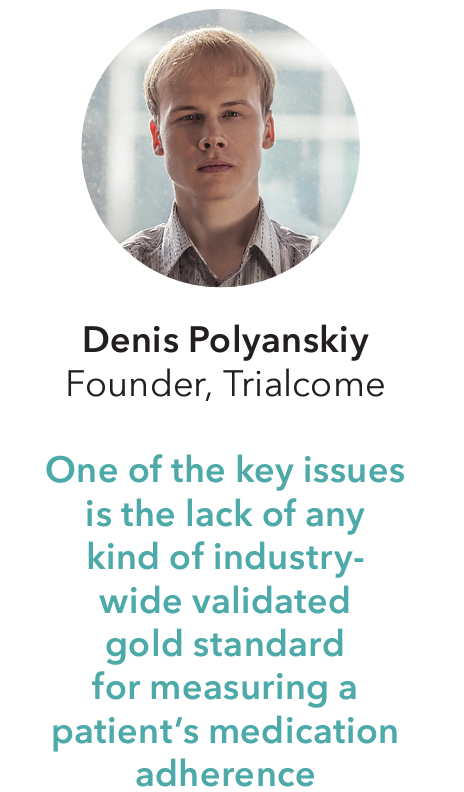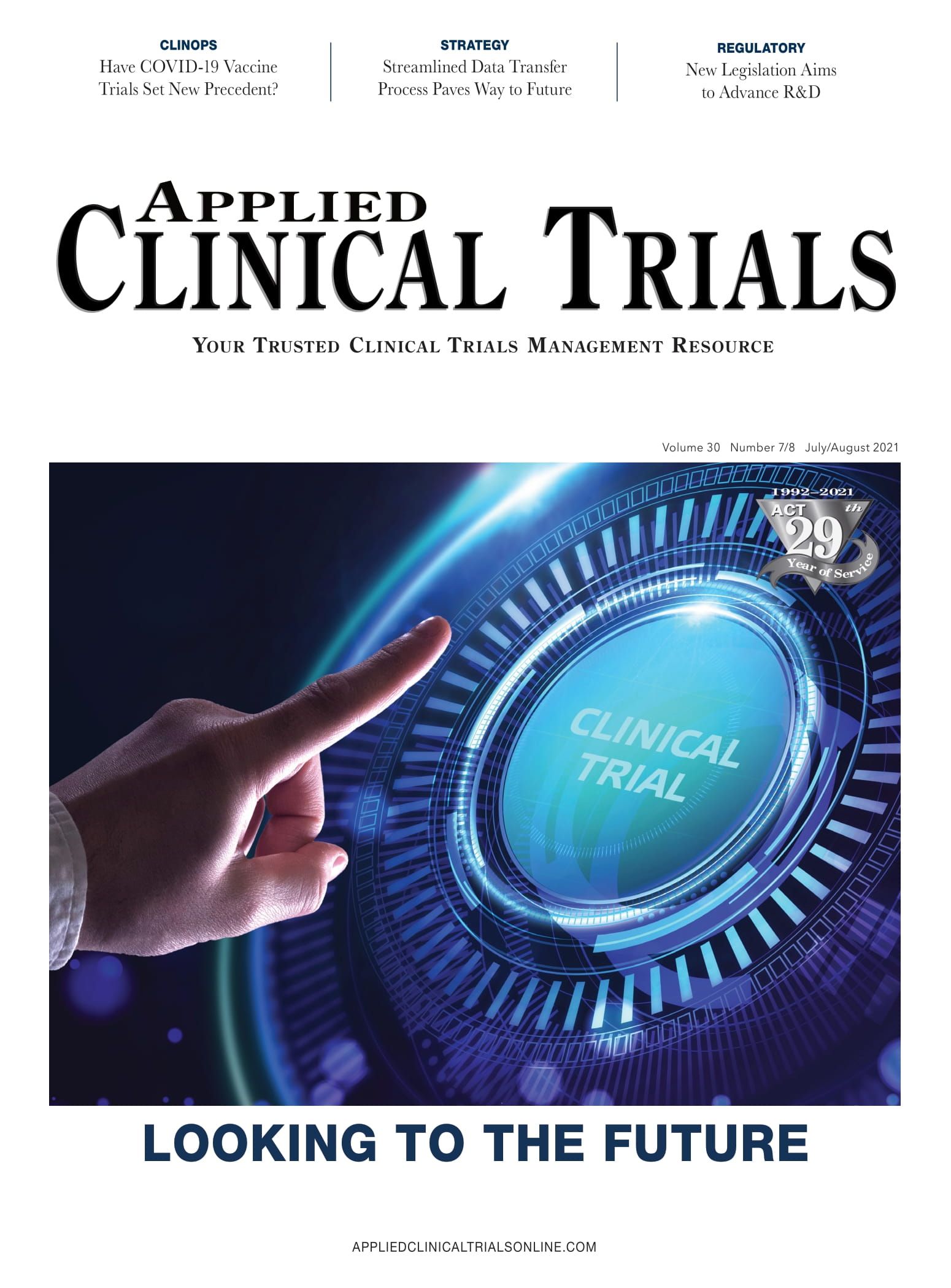Addressing Medication Adherence Challenges
Denis Polyanskiy, founder of Trialcome, discusses how the industry can overcome issues with non-adherence.

Trialcome is a software development company focused on the development and launch of an artificial intelligence (AI) driven medication non-adherence app that can provide benefits in both the clinical trial and routine clinical setting. Denis Polyanskiy, founder of Trialcome, discussed how the industry can overcome issues with non-adherence.
Applied Clinical Trials: What is the correct term: patient compliance or medication adherence?
Denis Polyanskiy: The term “patient compliance” refers to “an external source of patient’s motivation” or compulsion to take all the prescribed medications.
On the other hand, the term “medication adherence” refers to “a patient’s internal motivation” to take all the prescribed medications–without any external compulsion for example, from his/her physician. It is not about imperatives–but about the patient’s willingness to get healthy.
Therefore, “medication adherence” is the most suitable term to use in the context of a patient’s medication intake discipline level, because it is the patient’s willingness and conscious intention to follow to his/her prescribed medical recommendations which is one of the most important factors for treatment success.
Currently, medication adherence is an area in which there remain several unresolved issues and questions.
One of the key issues is the lack of any kind of industry-wide validated gold standard for measuring a patient’s medication adherence/non-adherence level. There are many questionnaire scales used in clinical trials as well as in general clinical practice, for example, the Morisky Medication Adherence Scale, as well as MARS and BARS Questionnaires, which can be completed by patients, by physicians or both–but there is an inherent and significant risk of estimation errors as a result of the human factor.
On the other hand, Directly Observed Therapy is the most reliable and objective approach for measuring a patient’s medication adherence rate. It is based only on objective metrics such as drug concentrations in biologic samples, etc. This approach completely excludes any possible measurement errors resulting from human factors, but it also has several limitations and is usually quite expensive.
There are plenty of digital health tools like mobile apps, wearables, smart pill boxes and bottles, which sit in the middle of these two extremes.
However, if we are truly willing to achieve the best results in improving a patient’s medication adherence rate–we should consider a more complex strategic approach–and not rely on just one or two tools. The development of a comprehensive patients’ medication adherence strategy, therefore, remains a critically important goal.
ACT: What are the root causes of non-adherence?
Polyanskiy: There are two types of medication non-adherence: intentional, when the patient clearly understands what he/she is doing and the reason, and unintentional, for example, when the patient simply forgets to take his/her medication according to the prescribed schedule, or he/she becomes confused with the multitude of medications he/she should take daily.
There are three key reasons for unintentional medication non-adherence: patient’s forgetfulness; ignorance about the basics of his/her disease and the importance of being compliant with their medication intake schedule; and when many medications need to be
taken simultaneously.
The situation becomes significantly more complex when we look at the drivers for intentional medication non-adherence. For example, the patient may try to simulate an appropriate treatment-compliant behavior. Unique to the clinical trials environment, is an intentional non-adherent patient’s behavior: artifactual non-adherence is when a patient intentionally violates the clinical trial protocol as defined within their informed consent form.
All these issues can be identified with statistical data analysis describing the accuracy of how the patient is taking notes in his/her personal medications diary; with medications scheduling design software; and with several
specialized questionnaires.
Now it is possible to determine personal non-adherence drivers for each patient and to design personalized method(s) of medication adherence rate improvement according to an individual’s lifestyle and habits–both for unintentional and intentional non-adherence causes.
ACT: What strategies can the industry use to improve medication adherence?
Polyanskiy: Reminders and notifications are the most convenient way for the patient to stay on track, for example, with an array of smart tech and apps.
Patient education and training with a digest of relevant educational materials should improve his/her awareness in health and treatment areas.
It is now possible to improve trust and quality of patient-to-physician communications with the use of in-app text chat and voice/video calls where the patient can honestly and openly talk to the physician on any health-related subject.
A single secured vault as the one place for retaining all personal medication-related data would also help to reduce the number of personal non-intentional non-adherence cases.
Through the development of our medication non-adherence app, we focused our efforts on meaningful analysis as well as understanding the most important personal non-adherence risk factors for each individual patient, and therefore we will be able to identify the risk factors, correct them and eliminate them.
ACT: What can the industry gain by improving adherence?
Polyanskiy: First, there is an economic factor in the clinical trial setting. If we reduce the need to enroll additional numbers of patients into the study, we will also reduce both the related costs and shorten study timelines. For example, if the average medication adherence rate in the study declines by 20%, this means an additional 50% more patients will be required to maintain the equivalent statistical power. Today, many drug developers typically increase the size of study populations by 15% to reduce the impact non-adherence has on a drug’s statistical relevance, requiring longer and more expensive trials. For a typical Phase III study, this may cost an additional $5 million to $7 million.
Second, if we use the same tools in the clinical trials setting that will be used in general clinical practice setting, we will be able to smooth the gap between the real-world evidence setting and clinical study setting.
If we extrapolate beyond the clinical trial setting for a moment, then if the patient’s medication adherence rate increases, this means by default that the patient or healthcare provider will purchase more medication, which in turn will increase pharmaceutical company revenues. Better medication adherence both in the real world setting and clinical trial setting may lead to significant cost savings for healthcare and pharmaceutical industry players worldwide, with fewer medical complications arising from better adherence as well as better health outcomes for the patient.
